How to Make a Dress Form Cover – Easy DIY Adjustable Dress Form Cover for Sewing Mannequin
Did you ever wonder how to make a dress form cover? I did, and every idea I found was more complicated than the other. This is the easiest how-to to cover a sewing mannequin in new fabric and make it so beautiful it will fit in your decor.
This is my adjustable dress form (re-re-covered). Her name is Bertha. Bertha and I have some things in common, like dress size. Though I’d like to think that -unlike her – I have a good head over my shoulders.
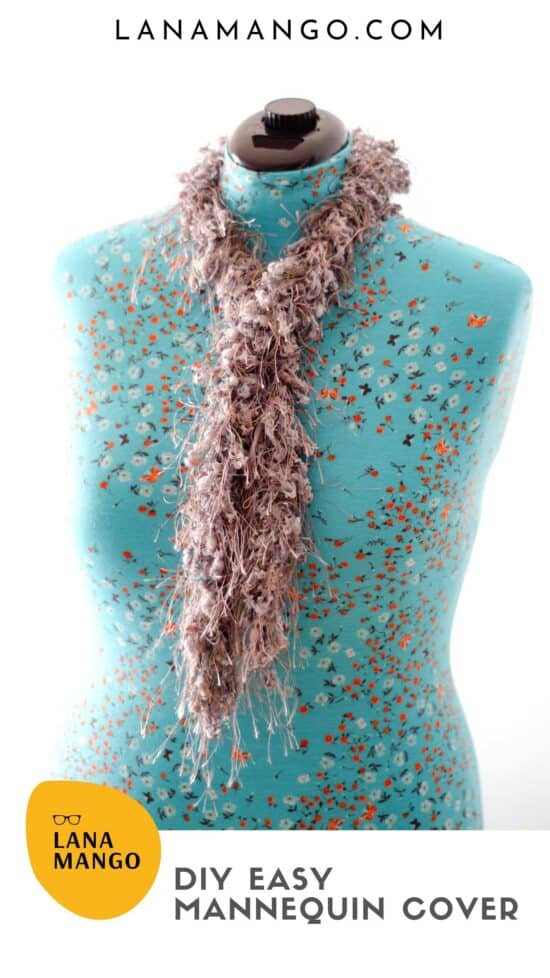
I always wanted to have a friend like Bertha, to sew some nice clothes together and try my garments on her… But friends like Bertha are expensive, so when I found I could have her for less than $100 plus shipping, I decided it was time.
Bertha ‘s an adjustable dress form, a very basic one. She’s not pinnable (bummer) and is covered in some ugly gray flannel on top of her plastic frame.
You can see the gaps where the adjustable plates join, on top of that, the gaps are more pronounced after I adjusted her to my size (I am bustier). I needed to do something about it.
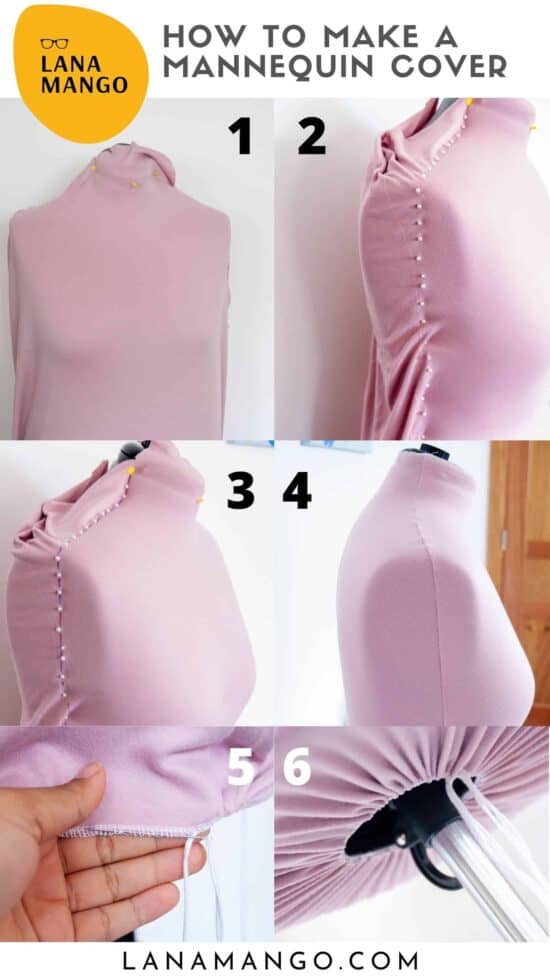
How to make a DIY adjustable dress form cover
Unfortunately, though I searched all over the internet, I couldn’t find anything about how to cover a dress form that wasn’t super complicated. Then this occurred to me. The process to make this dressform cover was simple, and the photos were self-explanatory.
- You’ll need some stretchy fabric (Jersey or ribbed knit works best).
- Cover the front of the dressform with the fabric, pinning alongside the side join (where the back and front plate meet), stretching as needed so it “hugs” the form tightly.
- Then mark the cutting line between the pins. Cut piece. Repeat to make the back piece.
- Join the two pieces by sewing the seams with the overcast machine. Serge the hem with looser threads.
- Pass a thick cotton thread through loops in the hem.
- Tighten and gather the fabric at the bottom. Tie the threads.
How to adjust the cover
The simplest way I’ve adjusted it was by putting on a bra under the new cover, which I padded to fill it to my larger bust. This type of adjustable dressforms can also be made into larger sizes, by separating the plates. I did not find it necessary in my case.
This is the second DIY mannequin stretch cover I made for her, following the same process.
While Bertha is not a pinnable dress form, the two layers of fabric (the pink one is underneath) means I can pin the fabric to the new cover in a pinch. So it’s not only a matter of looking better.
The blue dress form mannequin covers with the beautiful blue fabric with flower print makes it look so good that it fits in with my decor, and I can use it to model my work-in-progress, or serve as a pretty mannequin to model my other work.
I can now also wash her cover when necessary, and now that I see how easy this was, I can buy other fabrics and make a nice cover at any time. This may be the easiest DIY cover for a dress form yet.
Bertha hasn’t said anything about her new looks (she’s a shy girl), but I can tell she looks happier. What do you think?
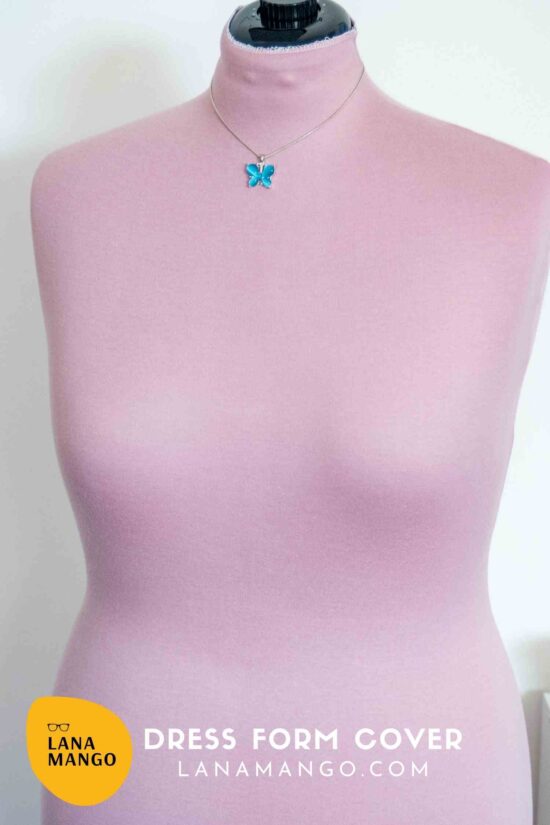
Get a sewing dress form mannequin
Adjustable mannequins have the advantage that you can change their size to fit your size, and change them as needed. These are good options that you can purchase.

- Adjustable dressform with Tri-Pod Stand Adjustable, Petite, Red
- Dritz My Double Designer Medium Adjustable Dress Form, Ivory
- Dritz Sew Opal Green You Adjustable Dress Form, Medium or Large
- FAMILY DRESSFORM Gray Small Adjustable Mannequin Dress Form Grey
Make you own dressform
If you do not want to buy an adjustable dressform, or want something that more faithfully fit your figure, there are several DIY option available, and I share the ones I liked the most here:
How to make your own dress form video
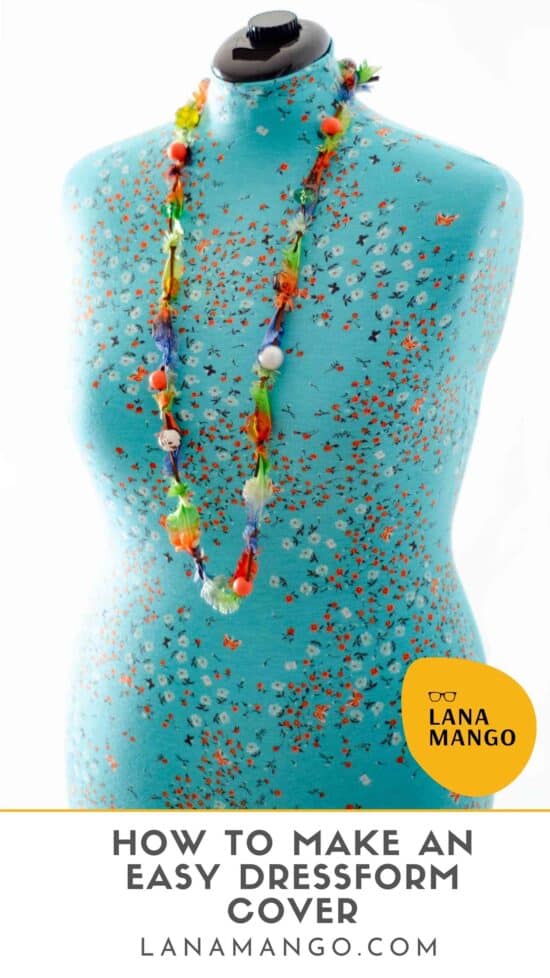

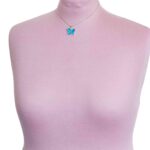


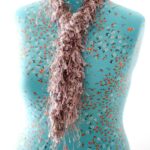
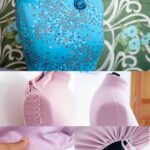
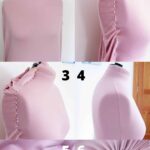
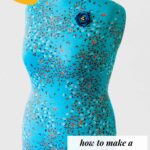
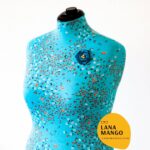


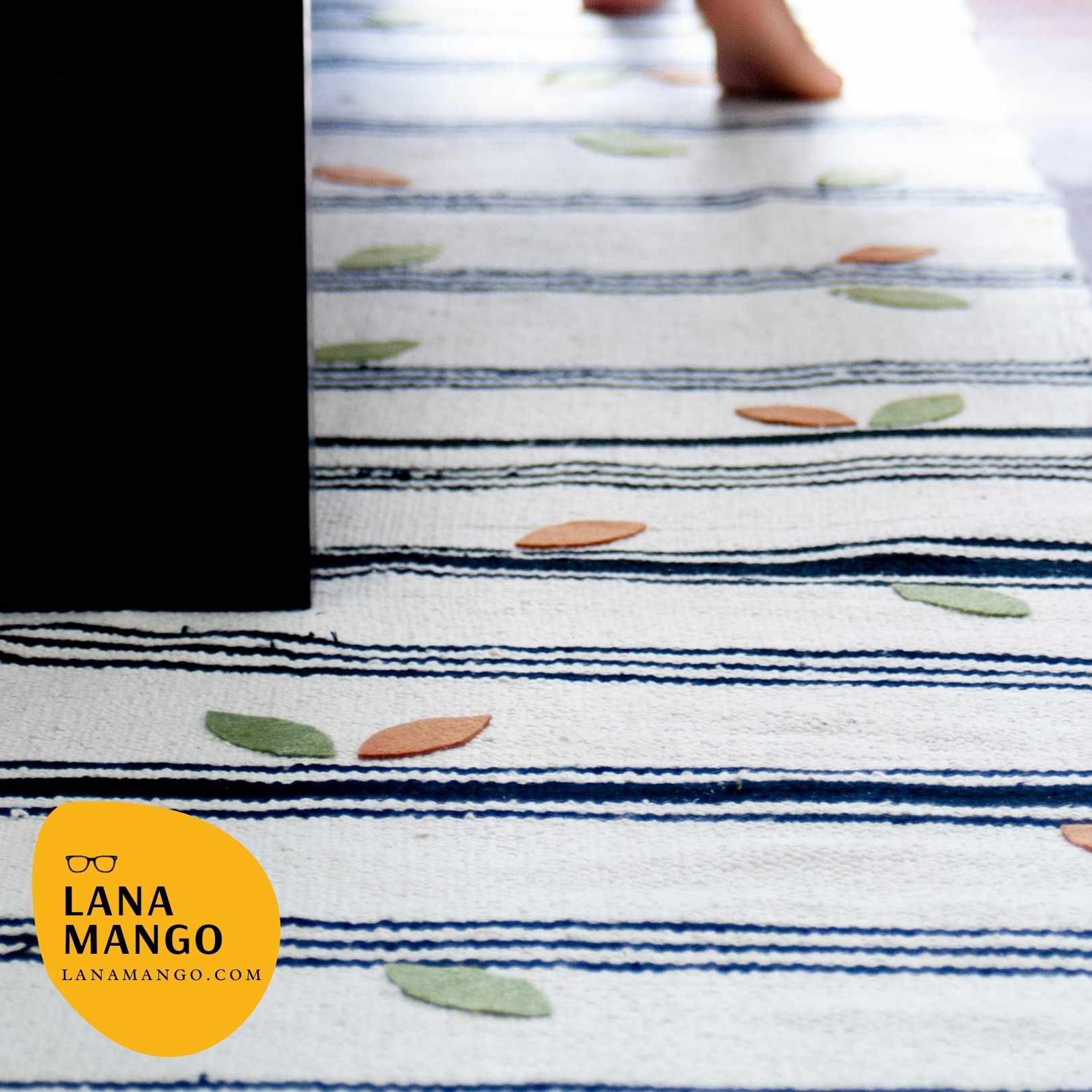

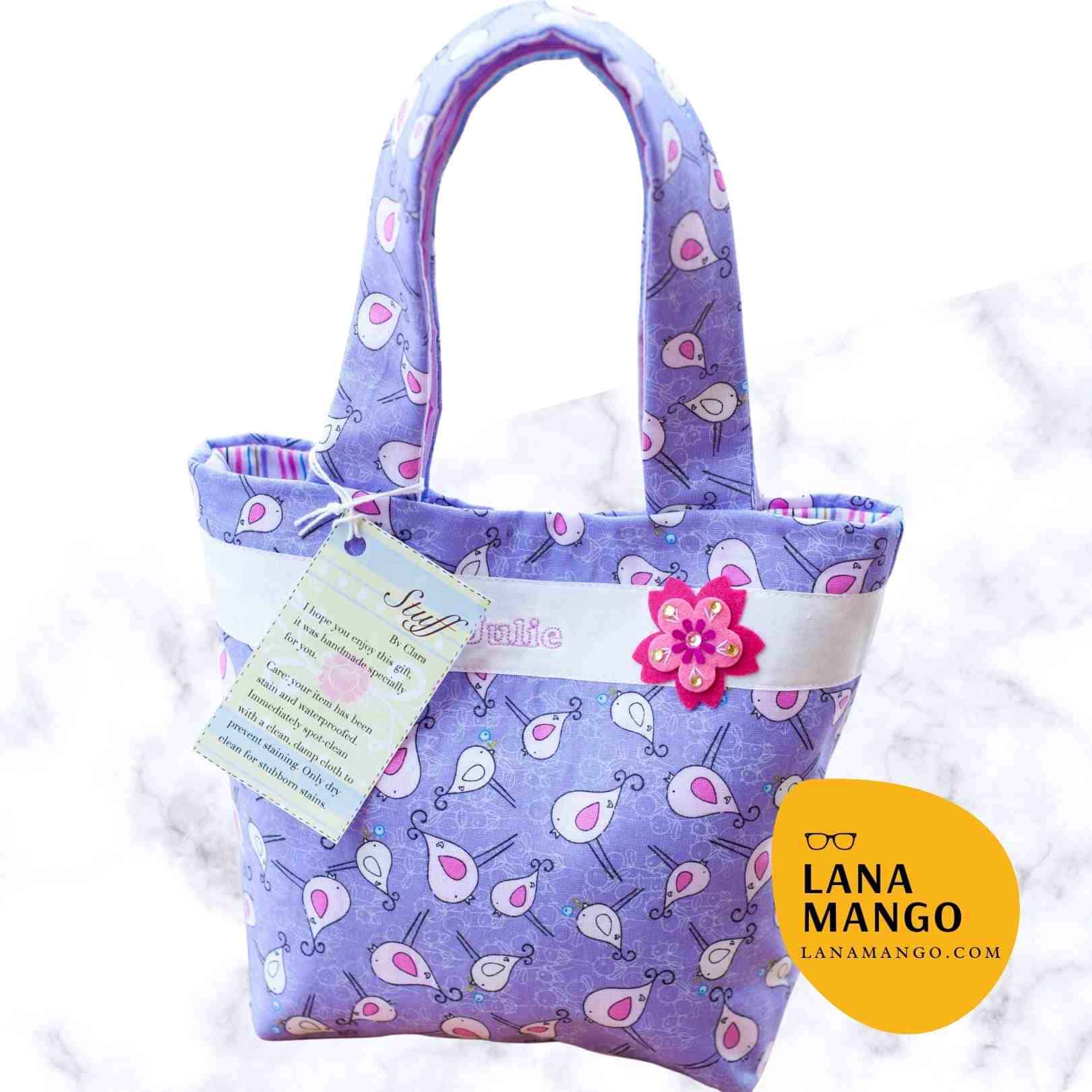

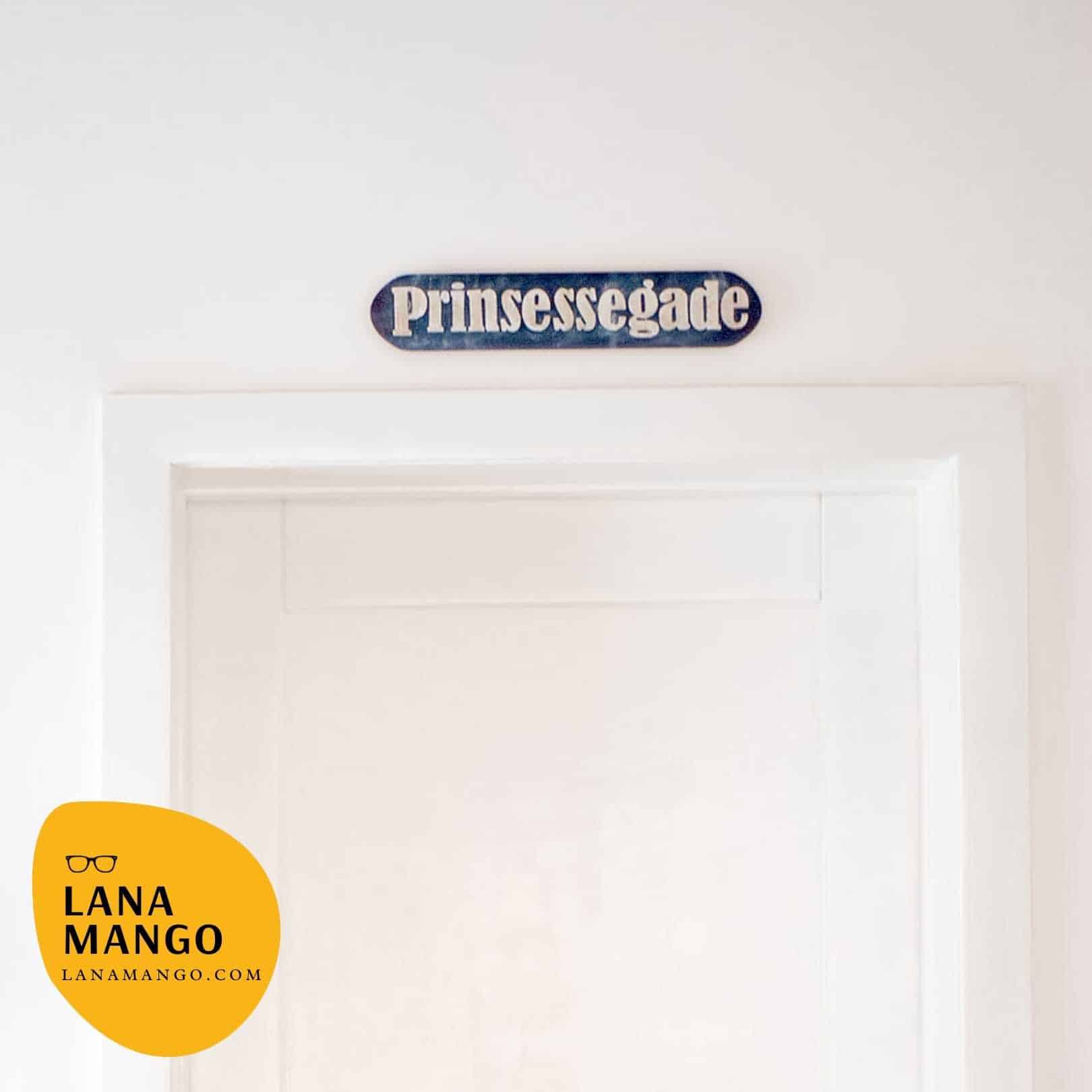
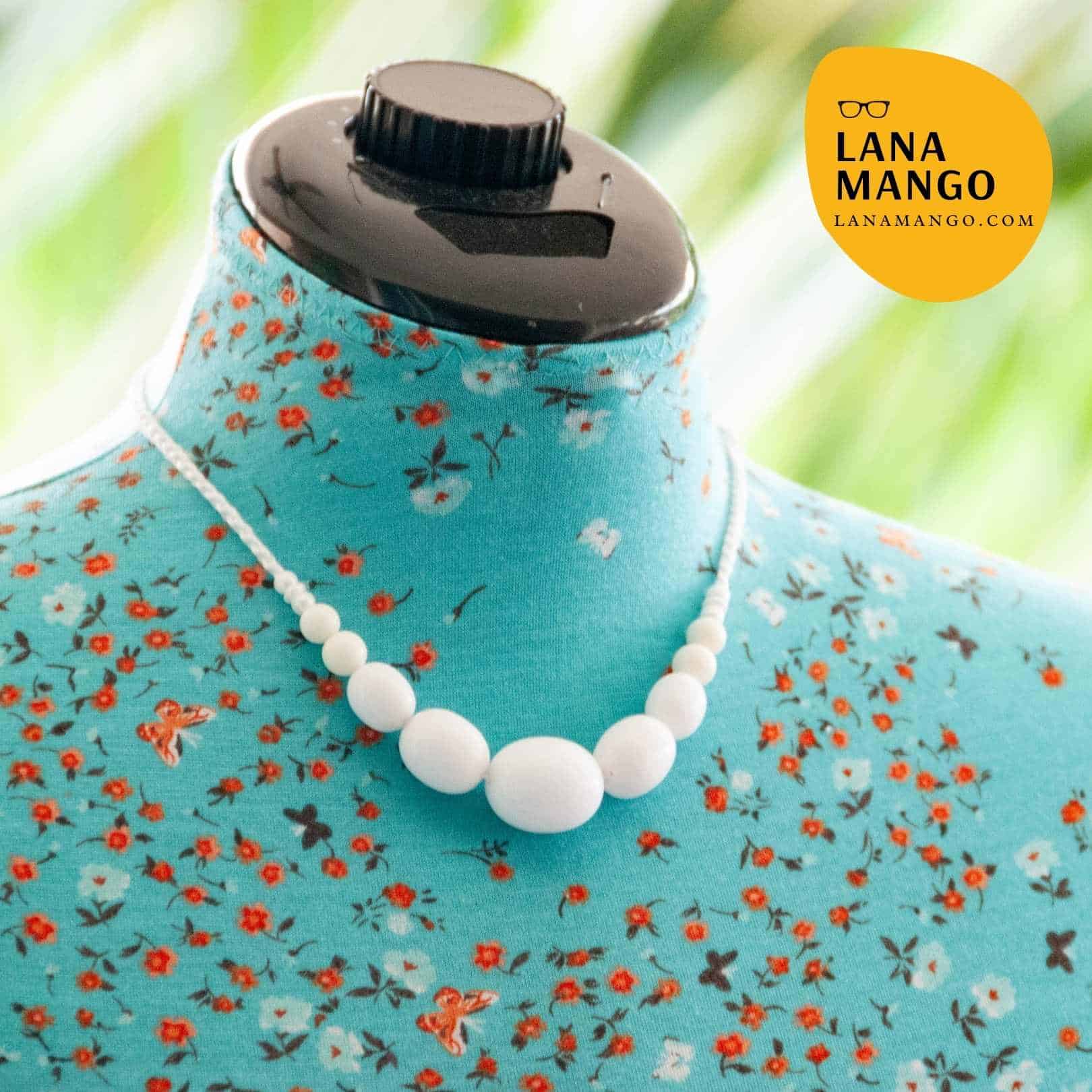
Bertha may be shy but you can tell by her upright straight stance that she is a happy girl that now feels empowered. I like this idea and may try it on (a much more rounded) Dolly who resides with me and has just been padded out but is currently naked. Thankyou for the idea
Thanks, I hope you do get to try it soon. It makes her look so much better, and almost become a decorative piece when not in use.
Looks great and a such a simple process. Did you leave some wiggle room while fitting to dress form to allow for expansion when you adjusted to your size? I have just bought an adjustable dress form and when I expand to my size there are sizeable gaps I would like to cover in the future. This looks to be a good solution.
It’s best to adjust it before doing the cover, especially if the fabric is not very elastic. In my case the adjustments are minimal (bust, mostly), so the fabric stretches enough to not be a problem. I hope that helps.
This looks great! Look forward to making the mannequin cover with your instructions 🙂 Thank you!
Brilliant !! I have been looking at numerous Pinterest sites on how to make a dress form and how to cover it and when I came across your double layer of knit material for the cover it was absolutely perfectly simple. I will be using your suggestion.
I am glad to hear it was useful.
Your article is so helpful! Thanks for the tips and including clear pictures. I especially loved reading the details, like giving Bertha a personality and the head-on-your-shoulders joke. You are an excellent writer and I’m so grateful I found your site for witty and to-the-point instructions. Thank you Lana Mango!
Thanks so much for the nice words.
Love your diy dress form cover! Thank you for sharing; just what I was looking for. 😉
Hi,
Thank you so much for your brilliant tutorial. I have now managed to make a cover for my mannequin. I used a daisy jersey, so she is now called Daisy.
Best wishes Dina
I found an adjustable form at the curb last week so I scooped it into the car. It’s really old and needs freshening. I’m not concerned about the size but it’s disgusting to look at. I plan to use it for selling on ebay & etsy etc. Your tutorial is perfect! I can’t wait for my significant other to go to work tomorrow so I can have at it! He hates it when I take stuff from the curb; I don’t want him to see it until she’s all dolled-up. Thanks for sharing!
I am glad to hear you found the tutorial useful. 🙂
Yes! I’m needing to spruce up my adjustable dress form a bit so that I can use it to take decent photos of a bridesmaid dress I just made. Thanks for the awesome tutorial!
I am glad you liked it. 🙂
That is so cute. I plan to try it.
Hello
Finally a easy way to cover a dressform! Thank you so much! Yours look lovely!
Thanks for the tute. I got an old dress form from a store that was closing and she’s just sitting here looking ugly. I will have to make her look pretty now and also give her a pretty name. My only question is about the name “Bertha”! I think mine will be “Olivia”.
I don’t know why, I guess I just liked the name. 🙂
Would putting a bra on Bertha and stuffing it to match your shape help? I know since everything on me has gone south I do a lot of adjusting.
I did that under the cover. 🙂
I have this exact dress form and this tutorial is EXACTLY what I needed! Thank you so much! Also… how did you get it to stay tucked into the neck lining so neatly?
it’s an an adjustable and you can turn the neck dial so it opens up and turn it back close.
In your post you said that you were bustier then Bertha. I was was wondering how you increased her busthine? I was given a dress form for christmas but it was too small. I love Bertha’s new look
It’s an adjustable dressform, you can move the breastplates to adjust the size.
Put an old full cup bra of yours on her and then stuff the cups- I used old pop socks and tights.worked like a dream! Her name is Lille Libercourt after a sign post I passed in France. She has a friend called Prudence Ecole (sign outside the village primary school there).
😀 Thanks for the advice, I had figured that already. I love the names of yours.
Finally! I can bring my ~Lucy~ down from storage and proudly display and use her more! Thank you for sharing this wonderful idea:)
Where did you get Bertha?
Frankly, I can’t remember, but nowadays I would start the search on eBay, they are much cheaper now.
I’ll definitely make this for my new (used) dress form. Thanks for posting!
Glad it helped!
Hello! I know this is a pretty old post now, but this tutorial was exactly what I was looking for and I just wanted to let you know that I think it’s GENIUS that you use the serger threads as a channel for the gathering hem. I’m going to have to try that technique! You should be proud that your work is still inspiring people.
Thank you so much. In case you wanted to know, Bertha is holding up beautifully and the cover looks as beautiful as the first day. 🙂
I m craft lover person ,always keen to watch new ideas.
Hi, Thanks for the tips. This will help me greatly. Thanks ever.
This is awesome. I have been looking for a black jersey cover for my dress forms, and so I thank you for posting this.
(Under statement of the month) THANK YOU!!!!!!!!!!!
Love it – Thanks for tutorial.Dee.
Thank you so much for sharing this! I have been searching the web up and down for a tutorial on how to cover my dress form. Now, I finally have a use for mine (which is too big for me, and I've been unsuccessful in selling). My fabric wasn't quite stretchy enough; however, I made it work by adding a zipper to the back – since I'm only using the dress form in photos that will have the front visible. It looks awesome!
Thanks all. The pink "skin" is growing on me. It looks so much better than what she came in with that pink is a huge improvement.
Hello!I think Bertha looks lovely in pink! Love the sweet hearts you made too!Rachel x
A definite improvement.. I like the sound of floral print, I'm sure Bertha does too! It's great when an aesthetic improvement is also a functional one too..
Very nice! And thanks for the source information. -EJ-
Bertha has a very pretty butterfly necklace and she does look happy and content in pink – instead of the gray ☺.